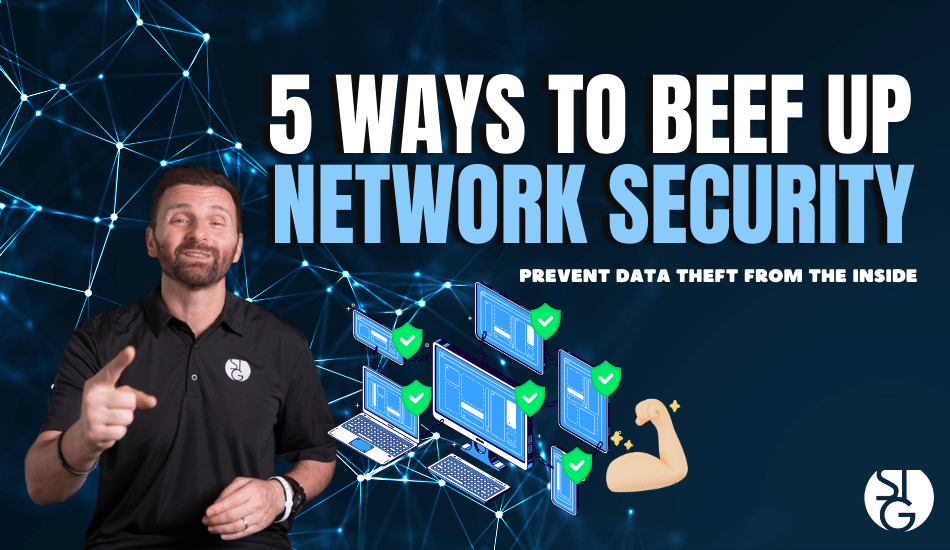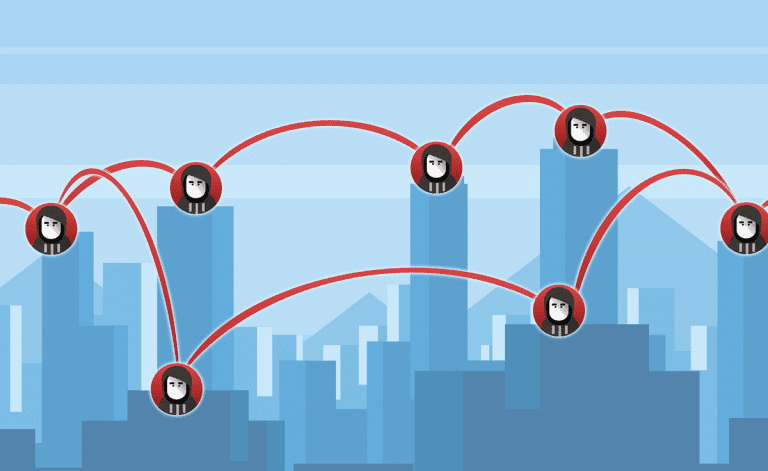Think your data is safe? Well, so did the last company that got hacked. Your business, like most businesses, probably relies heavily on digital tools. So it shouldn’t come as a shock that data theft is always lurking in the background. Cybercriminals are always going to evolve their tactics, but the good news is you can strengthen your network security without it becoming a headache. Today, we’ll be breaking down 5 ways to beef up network security and prevent data theft.
Remember, no business is too big or too small to be immune to data theft. Keep your sensitive data safe by implementing practical and effective defenses early on. Don’t wait for chaos to hit. Proactivity is key!
1. Rethink Data Access Controls
When it comes to your data, adjusting your access controls is the best place to start. These controls are your first line of defense against unauthorized intrusions. Default controls will often fall short when managing complex network environments, which is why many organizations turn to Zero Trust Network Access (ZTNA).
Zero Trust operates on the principle of “never trust, always verify.” It automatically assumes anyone trying to access the data is up to no good and only grants access to specific parts of your network based on who the user is, their role, and additional factors like location and device security.
Using an approach like this limits the potential damage one could create if a user’s credentials are compromised.
Modern Zero Trust solutions have started to integrate AI-driven anomaly detection. For example, if you have an employee whose account is suddenly accessed from a different country at 3 am, the system can immediately restrict or revoke access. If the sign-on is legitimate, access will be restored, but only if verified by another party. When you add such a dynamic layer of security, you significantly reduce the risk of data breaches.
2. Upgrade Your Network’s Firewall
Beefing up your network security is easy with firewalls. Think of firewalls as the guard dogs of your network, but remember, not all firewalls are created equal.
Traditional firewalls often rely on preset security rules, like filtering IP addresses and port numbers. While this used to be an effective filtering method, it just doesn’t hold up to the advanced ways in which data can be accessed like zero-day exploits and polymorphic malware.
Enter Next-Generation Firewalls (NGFWs). These advanced systems offer features like deep packet inspection, real-time threat analysis, and intrusion prevention. Unlike their predecessors, Next-Gen Firewalls don’t just monitor traffic; they analyze it at the application layer to identify and block malicious activity. It’s overall more complex and can filter on a much deeper and all-around level.
Automated Threat Response is another game-changer. It gives businesses and networks the ability to respond to threats before they become a bigger issue without the need for human intervention. For example, if a suspicious data packet is detected, the firewall can isolate it before it reaches your network, saving you valuable time and resources. This means you are basically covered whether you’re paying attention or not.
3. Build an Incident Response Plan
No matter how robust you think your cyber defenses are, data breaches can still happen. That’s why it’s important to develop a strong incident response plan whether you think your data is being threatened or not. Ideally, this plan will outline the steps your team needs to take to detect, contain, and recover from a security incident.
Above all, this will give you and your employees the confidence to stay calm and focus on the problem. Too many mistakes are made when a team is under-prepared.
A well-thought-out incident response plan will minimize the damage from an attack and prepare your team to act quickly and effectively. It’s important at this stage to regularly test the plan through mock scenarios. This not only helps prepare everyone involved but also provides valuable insights into the areas where your defenses or processes might need some improvement.
By treating incidents as learning opportunities, you can continuously refine your strategies and bolster your organization’s cyber resilience.
4. Tap Into Network Visibility
When it comes to your business’s network security, you can’t protect what you can’t see.
Many businesses realize they lack the tools to monitor their network comprehensively, leaving vulnerabilities unnoticed until it’s too late.
Security Information and Event Management (SIEM) systems solve this problem by aggregating data from various sources across your network. These tools provide real-time insights into suspicious activity, such as unexpected data transfer spikes or unverified devices connecting to your systems.
Having this level of visibility means you can quickly isolate threats, block malicious activity, and tighten access controls when necessary. It’s like having a security camera at every corner of your network with automatic threat reporting.
5. Segment Your Network
If you think of your business’s network like a house, if someone were to break in, you wouldn’t want them to have free access to every room. Network segmentation applies the same logic to your digital infrastructure.
Network segmentation basically divides your network into smaller sections. With these sections, you can isolate sensitive data and critical systems. Even if an attacker breaches one area, they’ll face additional barriers when trying to access others. It makes it as difficult as possible to access your entire network.
For even tighter control, consider micro-segmentation, which takes this concept further by creating highly specific, policy-driven sub-segments. This means that each part of your network has its own security measures, making it significantly harder for malicious actors to move laterally.
Don’t Skip On Data Security
While no security system is foolproof, these five strategies will make your network a far less appealing target for cybercriminals. These bad actors would rather go for low-hanging fruit then a company with various security measures in place. The best part? You don’t need to be a cybersecurity expert to implement them.
Start small. Upgrade your firewall or revisit your access controls, and build from there. Each step you take not only strengthens your defenses but also gives you peace of mind knowing your business’s sensitive data is better protected.
Check out our last IT topic! ➡️ Overcoming Common Financial IT Painpoints
If you’re a Los Angeles-based business looking for reliable IT support that doesn’t make you wait for answers, feel free to fill out a form at stginfotech.com, email us [email protected] or schedule a call via the calendar link below to learn more about how we can help you plan your IT infrastructure.
STG Infotech proudly provides IT Services for Small to Medium Businesses in Greater Los Angeles. We’d love to see if we can help you too!

Let’s dive into your IT!
Schedule a free 15-minute Virtual Meeting with a Business Technology Specialist of STG Infotech and get a closer look into your IT challenges.
We will assess your current IT infrastructure and answer any questions you may have about IT Services or partnering with STG IT.




